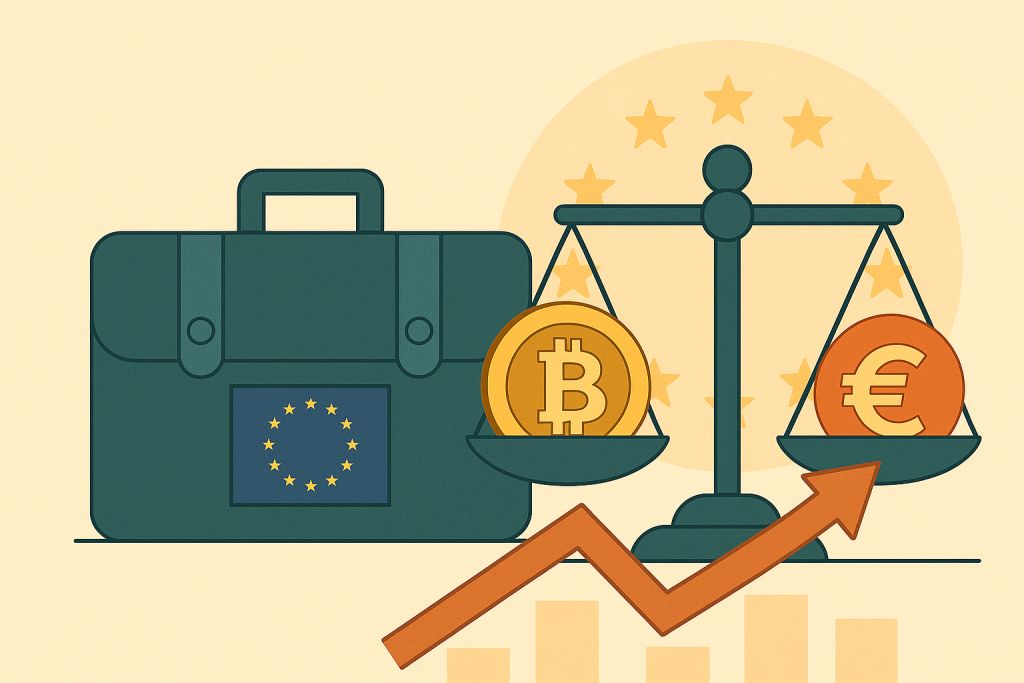In recent weeks, Eurozone stock markets have experienced a notable surge, with indices like the DAX, CAC 40, and Euro Stoxx 50 hitting multi-month highs. Analysts attribute this upward trend to improving economic data, corporate earnings beating expectations, and investor anticipation of a more accommodative monetary policy from the European Central Bank (ECB).
This optimism has started to ripple into the cryptocurrency market. Bitcoin has climbed steadily, nearing $30,000, while Ethereum and other major altcoins are showing parallel gains. Traders cite the “risk-on” sentiment—where investors are more willing to engage in higher-risk assets—as a key factor. Historically, crypto often tracks broader market confidence, particularly when traditional markets display sustained upward momentum.
Regulatory Developments in the EU
The Markets in Crypto-Assets (MiCA) regulation, which came into effect recently, is also influencing market sentiment. MiCA aims to create a unified regulatory framework for crypto-asset service providers across the EU, increasing transparency and legal certainty. While this is largely positive for long-term adoption, some countries have expressed concerns about financial stability and the potential risks associated with crypto proliferation.
Potential Drivers and Risks
Several factors could determine whether crypto continues to follow Eurozone equities:
- Interest Rates: If the ECB adopts more accommodative policies, borrowing costs could remain low, supporting risk assets, including crypto.
- Institutional Adoption: Increasing involvement of hedge funds, family offices, and corporate treasuries in crypto could provide additional liquidity and market stability.
- Market Sentiment: Cryptocurrencies remain sensitive to shifts in investor confidence and global macroeconomic trends.
Despite regulatory hurdles and volatility, many analysts are optimistic that a sustained rally in European equities could encourage further inflows into cryptocurrencies, reinforcing the growing correlation between traditional and digital markets.


